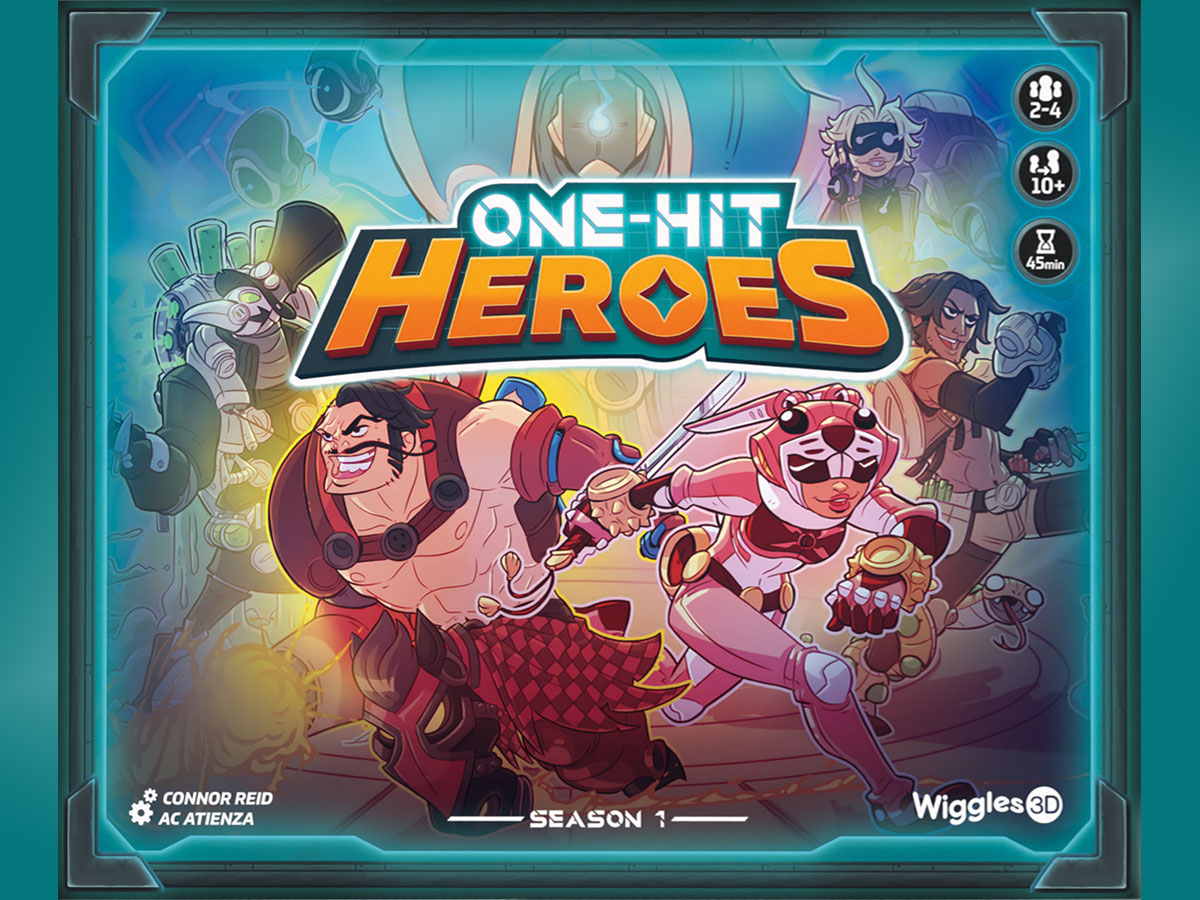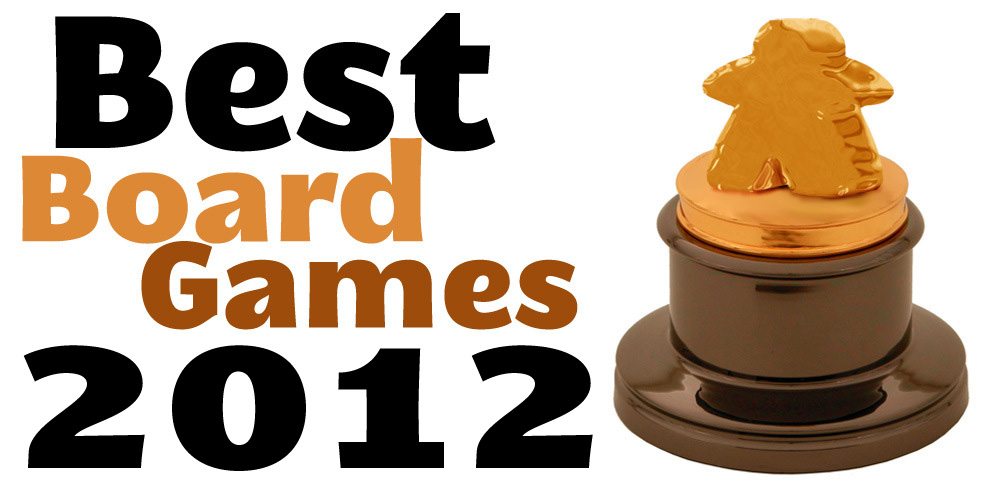Your team of powerful heroes is up against some deadly enemies that can knock you out in one hit! Can you work together to take down bigger and badder bosses?
What Is One-Hit Heroes?
One-Hit Heroes is a cooperative game for 1 to 4 players, ages 10 and up, and takes about 45 minutes to play. It’s currently seeking funding on Kickstarter, with a pledge level of $67CAD (about $49USD) for a copy of the game; there are additional tiers if you want to include the Epilogue episode or the big bundle that also includes all of Wiggles 3D’s other titles (5-Minute Dungeon and 5-Minute Mystery). The game length is somewhat variable because there are 3 episodes, each with 4 bosses, and you can pause the game either between bosses or between episodes. (A content note for parents: the game includes a lot of cartoony violence, and in one episode there is a bartender boss who serves you various drinks that cause negative effects.)
One-Hit Heroes was designed by Connor Reid and AC Atienza and published by Wiggles 3D, with illustrations by Alex Diochon, Niels Vestergaard, and Zachary Whistle.
New to Kickstarter? Check out our crowdfunding primer.
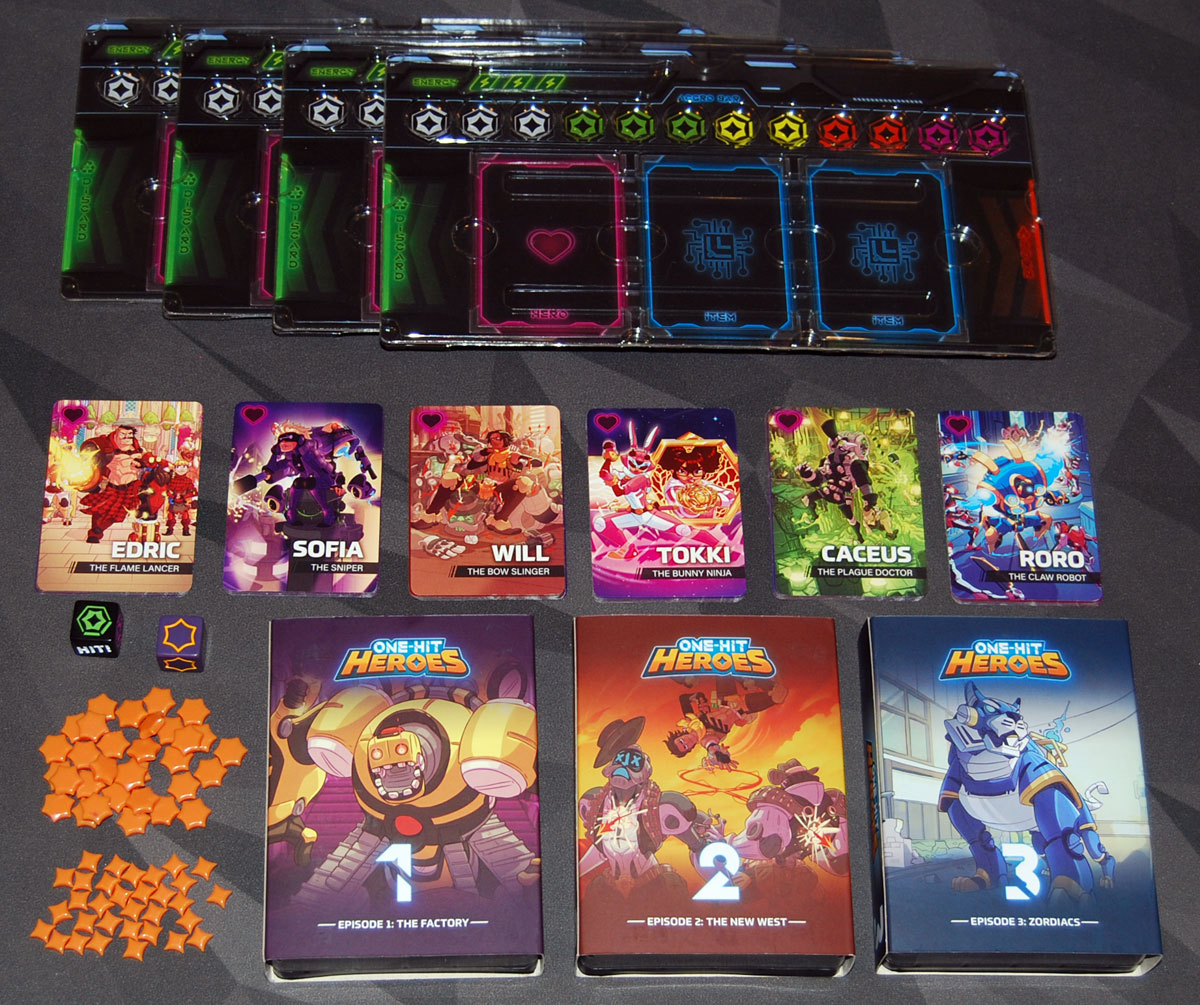
One-Hit Heroes Components
Note: My review is based on a prototype copy, so it is subject to change and may not reflect final component quality.
Here’s what will come in the box:
- 4 Player mats with Energy Sliders
- 3 Episode boxes (each containing components for 4 bosses, along with some card packs and other components)
- 6 Hero decks (each includes 1 Hero card and 11 starter cards)
- 35 Light Damage tokens
- 35 Heavy Damage tokens
- Attack die
- Hero die
The player mats are large cardboard mats with a transparent plastic overlay with spaces for several components. At the top, there’s a groove that displays your three energy icons, and the slider is a small black token that fits in the groove and covers up the energy as you spend them. Below that is your “Aggro Bar,” a track with 12 spaces in several different colors; the plastic overlay has small round wells over each space to hold a damage token. Finally, at the bottom there are three spaces for cards—your hero card and two item cards. The left and right edges of the board are labeled “discard” and “burn” as reminders of where to put those cards.
The damage tokens are small orange plastic starbursts—a tiny 4-pointed star for light damage, and a larger 6-pointed star for the heavy damage. The light damage tokens are particularly tiny, though it helps that they’re slightly rounded so they’re not impossible to pick up.
The attack die is engraved and painted, and has faces for “miss,” “hit,” and the four colors on the aggro bar. One nice touch is that the starburst icon on the aggro bar and the die are differentiated not only by color but also by the little bars going around the edge, which get thicker like a meter filling up.

The episode boxes have a mix of components, but each one contains four bosses, each of which has a boss mat and a deck of cards for that boss’s actions, as well as 3 card packs that you get to open when you defeat a boss. The prototype only includes components for two of the episodes, but it was enough to see that there’s some variety in what’s included for each boss.

The illustrations in the game are similar to those in 5-Minute Dungeon, which was also illustrated by Alex Diochon. (Niels Vestergaard and Zachary Whistle also provided illustrations, and I think they did a good job of making everything in a similar style.) It’s cartoony with a lot of humor and over-the-top action, as well as some fun references here and there. I particularly like all of the robots and mech-based technology in the illustrations, which bring to mind old cartoons like Voltron.

The game box is fairly large but well-organized, with slots for each of the 6 hero decks and the four episode boxes stored below the player mats. There’s not room to add much more in the box, though, so if they release more “seasons” in the future they’ll probably have to stay in their separate boxes (or maybe there will be more heroes?).
How to Play One-Hit Heroes
You can download a draft of the rulebook here. The prototype rulebook did not have specific rules for solo mode but you can just play with multiple characters by yourself; there is an optional DO66-0 add-on that will make for a more streamlined solo mode, but that was not included in the prototype.
The Goal
The goal of the game is to defeat the bosses without getting hit! After all, you each only have 1 hit point.

Setup
Give each player a player mat and a hero deck. The hero card and the two item cards from the deck are placed on the mat, as well as the energy slider (placed to the far right to show full energy). Put three damage tokens (of any type) in the first three spaces of the aggro bar on the left. Shuffle the rest of your cards and set them nearby, and then draw 5 cards for your starting hand.
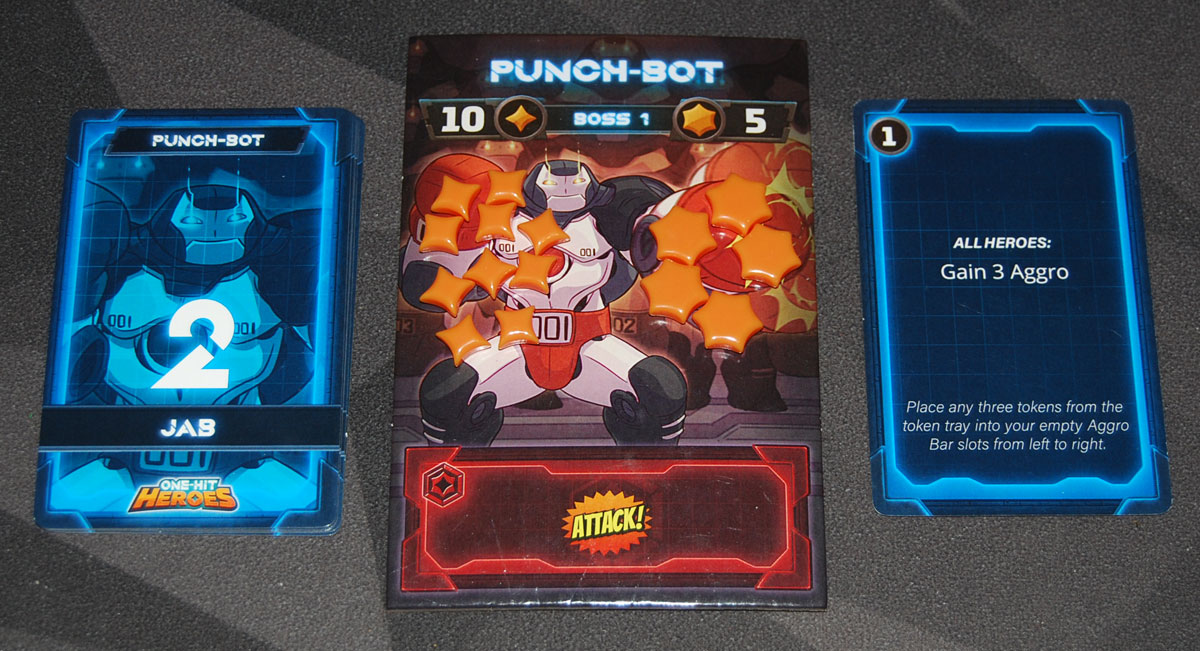
Open the episode box and set up the first boss mat: place light and heavy damage tokens on the boss mat as indicated for its starting health. Find the corresponding boss deck and place it nearby—the cards should be in order, with card 1 on the top of the deck.
Gameplay
The game alternates between hero turns and boss turns—the boss will perform actions after each player.
On your turn, you scout, fight, and then rest.
Scout: Flip the top card of the boss deck into a play pile. This shows you what the boss will do at the end of your turn, and also reveals the back of the next card in the deck, which might give you a hint about its upcoming action (based on the title or color of the card back).

Fight: Play up to 3 cards from your hand; you may also use any “once per turn” effects on the items on your board. Weapons do damage: whenever you damage the boss, take the damage token from its mat and place it in your aggro bar—you’re making it more mad at you! (If your aggro bar is full, any additional aggro you would gain is discarded.)

Actions have one-time effects like manipulating aggro or cards. Items (you’ll only have two at the start of each episode) are played into an item slot; if there’s already one there, it gets destroyed.

Reaction cards say when they can be played, and they don’t count toward your 3 card plays—some can be played during another player’s turn, or during the boss turn. Some cards will cost energy to play. Note that if a card says “spend energy to do X” then you must have the energy to play the card; if a card says “lose energy” and you have none, you can still play the card and there is no more to lose.

Rest: Clean up your cards. Each card has a green recycle icon or a red burn icon—place all the cards you played into their respective piles on the left and right side of your mat, and then draw back up to hand of 5 cards. If your deck runs out, reshuffle your discard pile to form a new deck.
Boss Turn
First, resolve the effect on the boss mat, if any. Then, resolve the boss card that you revealed during the “scout” phase.
Some effects have an aggro check—there’s a colored border and background, with an aggro icon in the corner. If any hero has tokens in that color space on their aggro bar, then that effect triggers; otherwise, you can ignore it.
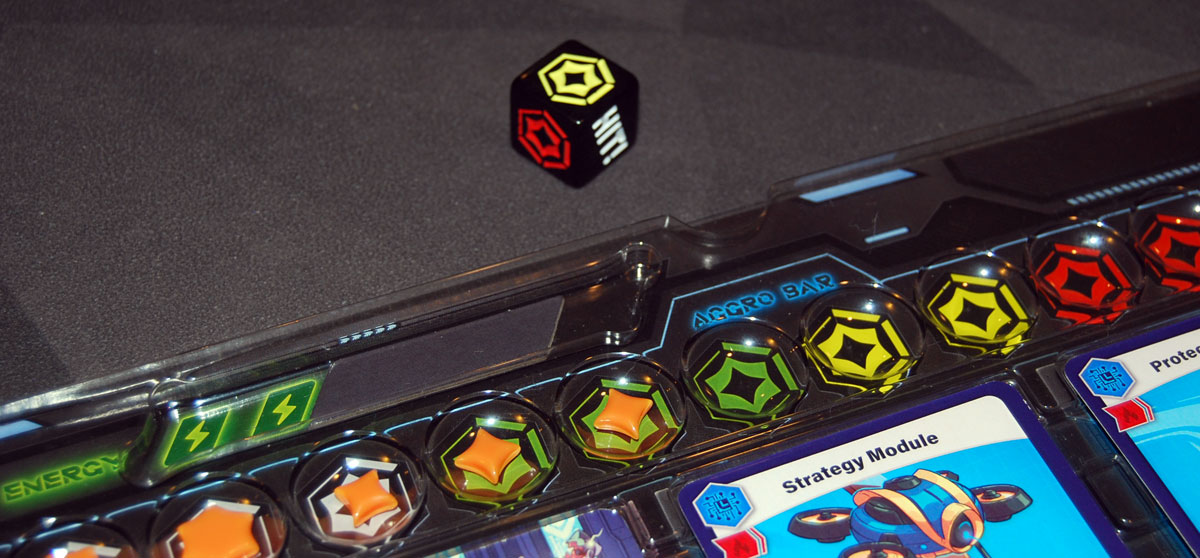
Whenever the boss triggers an “Attack!” effect, you roll the attack die. If it shows an aggro icon, then any heroes who have tokens in that color space on their aggro bar have been attacked. A “miss” means nobody was hit, and “hit” means everyone got attacked. If you get attacked, you must avoid getting hit—either somebody needs to play a reaction that can help, or you may destroy an item to block a hit.
Game End
If anyone gets hit, you’ve lost the fight; you reset the setup for the current boss and try again; you may choose anyone to go first this time, and you can start with a boosted hand by drawing 7 and discarding 2.
If you remove all of the damage tokens from the boss, you have defeated it and win! Now you get to open the corresponding card pack: turn all the cards face-up, and starting with the player who landed the killing blow, everyone gets to choose 1 card at a time until everyone has gained 2 cards total. The rest are put into the armory slot in the game box. These cards are added to your deck and shuffled in for the next fight, and then you set up the next boss in the episode. The player who played the last hit on the previous boss starts the next fight.
If you get through all four bosses, then you have completed the episode! Reset your hero deck back to the starting deck for the next episode, putting all of the remaining cards into the armory. (Your starting cards have a grey number at the bottom and cards from the packs have gold numbers.)
For future games after you’ve finished an episode, whenever you defeat a boss, you just draw 10 cards from the entire armory and everyone drafts 2 from those.
Why You Should Play One-Hit Heroes
I’ve written up both 5-Minute Dungeon and 5-Minute Mystery in the past, and both are excellent games that I’ve really enjoyed: 5-Minute Dungeon was a frantic, card-slinging brawl, and 5-Minute Mystery mixed seek-and-find with some quick deduction. One-Hit Heroes doesn’t have the real-time pressure of the others, so the gameplay is a little more relaxed and allows for a bit more strategy and planning, but it still has a lot of the absurd humor of 5-Minute Dungeon in both the heroes and the bosses.
There are some small bits of story in the game involving a weird metal called Infinitum. Of course, the bad guys have gotten hold of it, and it’s up to the heroes to figure out where they’re getting it and stop it at the source. The first episode takes you to a factory warehouse, and then you’ll head out to the New West to face the McClank Gang. And although the third episode wasn’t included in the prototype, it’s about some hacked Zordiacs … I wonder if that robot cat has four other friends that combine into a giant form?
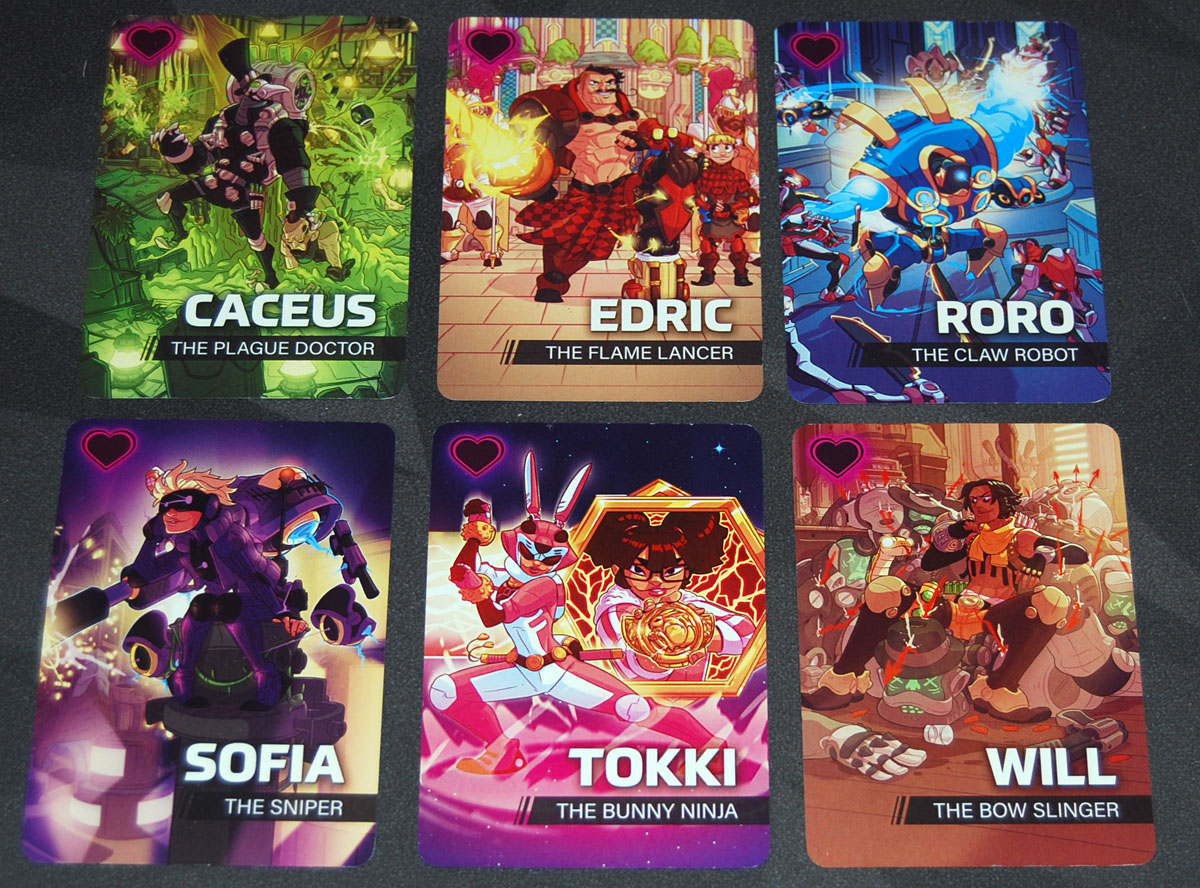
Less is known about the heroes, though—I don’t know if we’ll get more during the campaign or in the finished game, but mostly we just have what we can pick up from the illustrations on their cards, and I guess you can make your own stories from them. Each one has their own strengths and styles of play. Caceus the Plague Doctor can do extra damage by discarding weapon cards and also refills energy; Edric the Flame Lancer has a lot of combos that involve burning cards; Roro the Claw Robot takes some risks by destroying her own items; Sofia the Sniper is a bit of a gambler with a die to roll for damage; Tokki the Bunny Ninja is all about chaining actions for extra actions; Will the Bow Slinger is agile and has a quiver full of arrows. But those descriptions don’t give you the full effect of seeing all the wackiness from the illustrations, like the fact that Edric wears a kilt and apparently has one leg that has been replaced by a … robotic horse’s head? Or that Tokki—whose costume is reminiscent of a Power Ranger’s—probably gets her bunny ninja powers from a magical amulet.
The game itself is a mix of mechanics. There’s a bit of deck-evolution; it’s not quite deck-building since you don’t alter your deck every turn, but after you defeat a boss you get to add 2 cards to your deck, and I like the way the available cards are related to the boss you just defeated. You’re managing limited energy and actions: with only three cards to play per turn, do you choose to do some damage, get some more energy, or try to get some better cards in your hand?
But the secret sauce in One-Hit Heroes is probably the aggro bar, and it’s both clever and simple to use. I know I’ve played some other games (Kinfire Chronicles is a recent one) where enemies use some sort of aggro tracker to decide who they will attack, I haven’t seen anything quite like this where damage dealt corresponds directly with an aggro bar. (Although the aggro mechanic is mostly intuitive, you do have to remember to put those damage tokens from the boss into your bar, rather than discarding them into the supply, which feels like a natural place to put them at first!) The more damage you do, the angrier the boss gets—and the more likely you’ll get hit if the boss attacks.
A lot of your tactics involve managing everyone’s aggro: can we avoid an attack altogether this round by keeping everyone below yellow? Who can block an attack—is it worth having them take aggro from another player who’s more vulnerable? Each boss requires a different approach, and you have to figure out the balance between damaging the boss and avoiding damage yourself—charge in too quickly and you might get knocked out in return, but be too cautious and the boss may have time to power up their stronger abilities.
So far I’ve gotten to play through the first episode of One-Hit Heroes twice—once with my kids and once solo controlling two characters—and the second episode once, and I’ve also seen all six of the characters in action just to get a taste of them. I can say that it’s been a blast to play, and my 10-year-old and 17-year-old have both really enjoyed it as well and are excited to play through the whole season once it’s finished. There is a particular delight the first time through because you don’t know what the boss is going to throw at you, and you don’t know what cards are going to be in the card packs, but subsequent plays also let you try different strategies and draft different cards depending on which characters you’re using. Since you do reset back to the starting deck at the beginning of each episode, you can eventually just pick whichever episode you want to dive back into.
I also like the fact that One-Hit Heroes isn’t too punishing if you lose. You just reset to the beginning of that particular boss fight and try again. In my plays so far we’ve managed to beat most of the bosses on the first try, but a couple of them took two tries. Some folks might prefer their cooperative games to be a lot harder to win, but I think the mix of luck and tactics here seems pretty good for the target audience: you do have to work together to win, but there’s also room to laugh at the illustrations and take silly risks sometimes. And, of course, things will play out differently based on the number of players you have, which characters you play, and which new cards you draft from the card packs. If you like the idea of skipping straight to the boss fights and battling with some ridiculous weapons and powers, One-Hit Heroes may be just what you’re looking for!
For more information or to make a pledge, visit the One-Hit Heroes Kickstarter page!
Click here to see all our tabletop game reviews.
![]() To subscribe to GeekDad’s tabletop gaming coverage, please copy this link and add it to your RSS reader.
To subscribe to GeekDad’s tabletop gaming coverage, please copy this link and add it to your RSS reader.
Disclosure: GeekDad received a prototype of this game for review purposes.
